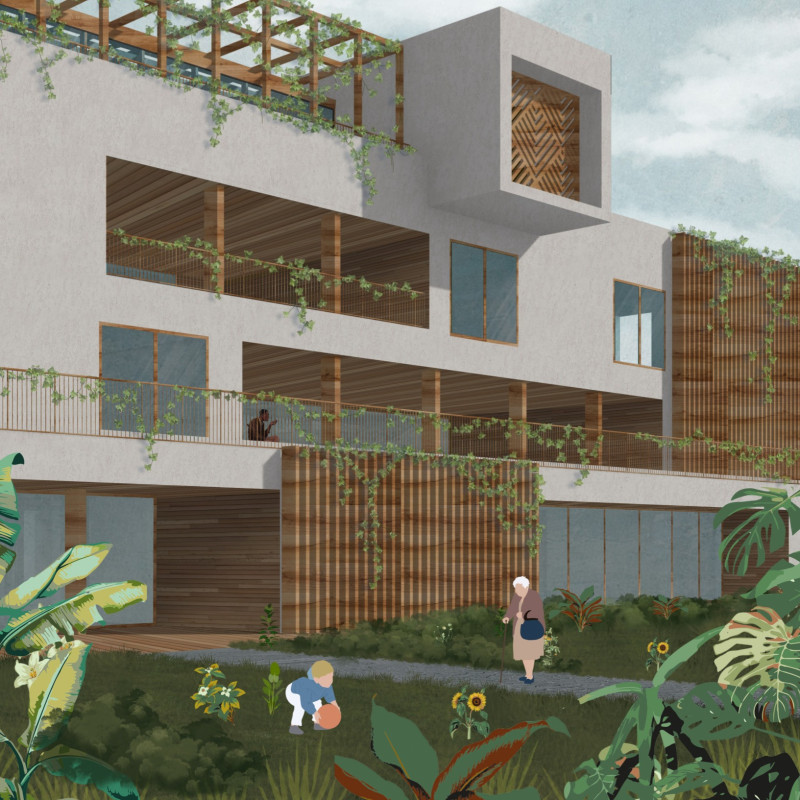5 key facts about this project
Through its innovative design, the project represents a commitment to sustainability and a dialogue between the built environment and the natural landscape. The building's form is carefully sculpted to harmonize with its surroundings, utilizing organic shapes and a fluid layout that promotes both interaction and movement. This design joins elements of local tradition and modern sensibility, making a statement about the relationship between heritage and contemporary life.
Functionally, the structure is designed to accommodate a variety of uses, catering to the needs of its community while also providing spaces for social interaction and engagement. Interior spaces are arranged thoughtfully to facilitate both privacy and communal gatherings. Large, open areas are balanced with more intimate nooks to create diverse environments within the overall design, allowing for flexibility and adaptability in use. The careful placement of windows and doors optimizes natural light and offers views that connect occupants visually to the surrounding landscape, reinforcing the project's intent to blend indoor and outdoor experiences.
The materials chosen for this project further enhance its architectural narrative. The use of reinforced concrete provides a solid foundation, symbolizing durability and strength. Steel beams allow for expansive open areas, reducing the need for excessive structural support and enabling an airy feel within the interiors. Glass facades contribute transparency, allowing for visual connections while promoting energy efficiency. Natural wood accents add warmth and character, offering tactile experiences that enhance the human aspect of the architecture. Stone cladding not only grounds the building within its context but also reflects local geological features, marrying the constructed and natural worlds.
One of the project’s unique design approaches is the incorporation of passive design strategies, which significantly reduce its environmental impact. These strategies capitalize on the local climate, allowing natural ventilation and sunlight to regulate temperature and light levels within the building. The architects have installed green roofs where suitable, further emphasizing sustainability and contributing to local biodiversity. This alignment with environmental considerations extends the project's value beyond mere aesthetics, imbuing it with a sense of responsibility towards future generations.
Additionally, engagement with the community throughout the design process ensures that the building truly meets the needs of its users. Feedback gathered from potential occupants has been effectively integrated into the design, fostering a sense of ownership and connection to the space. This aspect is especially pertinent in creating a welcoming environment that resonates with local culture and preferences, making this project not just a building but a community hub.
In examining the architectural plans, architectural designs, and architectural sections, one can appreciate the meticulous attention to detail that characterizes this project. From the layout of the spaces to the intricacies of material connections, every element has been considered to create a cohesive whole. The thoughtful arrangement of functional areas, as well as the incorporation of sustainable techniques, showcases a responsive approach to both challenges and opportunities inherent in contemporary architecture.
This architectural project serves as an example of how thoughtful design can foster community interaction, respect for the environment, and a celebration of place. To gain deeper insights into the project's architectural ideas and design methodologies, readers are encouraged to explore the project presentation further, examining how the interplay of form, function, and context has been harmonized within this significant architectural endeavor.


























